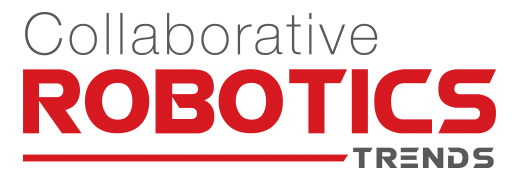Exoskeletons augment human ability
This technology is more directly related to human augmentation. Wearable technology has come a long way in recent years, to the point today that full-body powered exosuits exist. Wearable robots can enhance workers’ strength, increase their stamina, and significantly reduce the risk of injuries. Certain lifting tasks that used to require two people can now be done with one.
For example, think of a worker in a warehouse who handles tires. These are heavy, odd-shaped items that are often manually handled in various stages of the distribution process. Handling such items makes workers particularly susceptible to strain from overexertion. Modern exoskeletons can reduce this risk, thus improving the ability to keep workers healthy while concurrently improving their performance in the process.
Security robotics to prevent shrinkage
Mobile security robots are designed to extend the ability of a human security officer. These robots offer a mobile sensor-enabled tool set that can deliver data-driven insights to security officers.
Security robots typically feature sensors that don’t exist in other types of security systems — such as radiation, thermal, or air quality — and they adds a digital element to security services. With these robots, security officers can more quickly respond to incidents and keep eyes up while they are in motion.
In the warehouse, these devices can be used to scan people in, patrol the exterior and interior of the facility, and ultimately provide a robust tool that enables each security officer to do more.
Industrial inspection robotics
There are several robots on the market that are designed as mobile sensor platforms that can be used to inspect facilities. For example, inspecting the air ducts in a warehouse would traditionally be a manual effort that could take several days.
With manually controlled tools designed to operate in tight spaces, a single human operator can control such a robot and accelerate and improve the inspection process. Not only does this style of robot enable a greater “reach” by a human operator; it also enhances the ability to inspect with digital-driven technologies.
For example, a high-definition camera system equipped with sophisticated visualization software can see corrosion that would be too small for the human operator to notice. This type of technology also increases the safety of human workers by removing them from hazardous environments.
Autonomous disinfection robots aid supply chains
Originally developed for the use in hospitals to prevent the spread of hospital-acquired infections, autonomous disinfection robots have become a consideration for warehouses, too. Since the dawn of the COVID-19 pandemic, regularly disinfecting surfaces is crucial. With workers moving around the warehouse and regularly touching items, autonomous disinfection robots are an efficient and more practical alternative to manual disinfection.
Fundamentally, there are two different types: those spraying disinfectant aerosols to reach wider areas, and those using UVC light which disinfect surfaces in their immediate surroundings. Both can effectively disinfect large areas with minimal human input, which also helps prevent spreading issues stemming from the human operator themselves.
As we progress into the post-COVID environment, this technology will increasingly be looked upon to enhance sanitation in warehouses, be it between shifts or in response to an exposure in a warehouse.
A variety of applications in supply chains
Even from this brief overview, it’s clear that automation technology is becoming increasingly important in the warehouse. Deploying robots provides not only significant efficiency benefits but also protects workers from accidents and injury.
Thanks to the variety of shapes and forms they come in, warehouse robots can be used in a variety of applications. As we reflect upon the insights here, we must be acutely aware of one key element: Robots are tools designed to improve human performance or otherwise improve a human’s experience with some task.
Robotic tools are taking on an abundance of forms, with a variety of features, and enhancing a range of workflows. Note that in every one of the examples above, people are still the key to executing to the task or process. Robots simply make people’s jobs easier, safer, and more efficient.
 About the author:
About the author:
John Santagate leads Körber Supply Chain Software as vice president of robotics. He drives the strategy for AMRs, warehouse robotics, and the company’s robotics partner network. As a key component of Körber’s end-to-end solutions, Santagate ensures his technologies drive customer success and integrate seamlessly with the broader Körber portfolio.
Solving complex challenges and opening new opportunities through technology and innovation, Santagate spent his career in supply chain making his customers the most efficient and profitable businesses in their industries.
Prior to his role at Körber, Santagate acted as consultant to industry-leading organizations to transform their supply chains with Tata Consultancy Services in the Supply Chain Center of Excellence. He was also a leading robotics and supply chain industry analyst at IDC for five years, where he focused on market trends, forecasts, and thought leadership for robotics and business process evolution.
In addition to his vice president role, Santagate is an adjunct instructor at the University of Massachusetts, Lowell, where he teaches a course on supply chains and logistics.


Leave a Reply
You must be logged in to post a comment.